



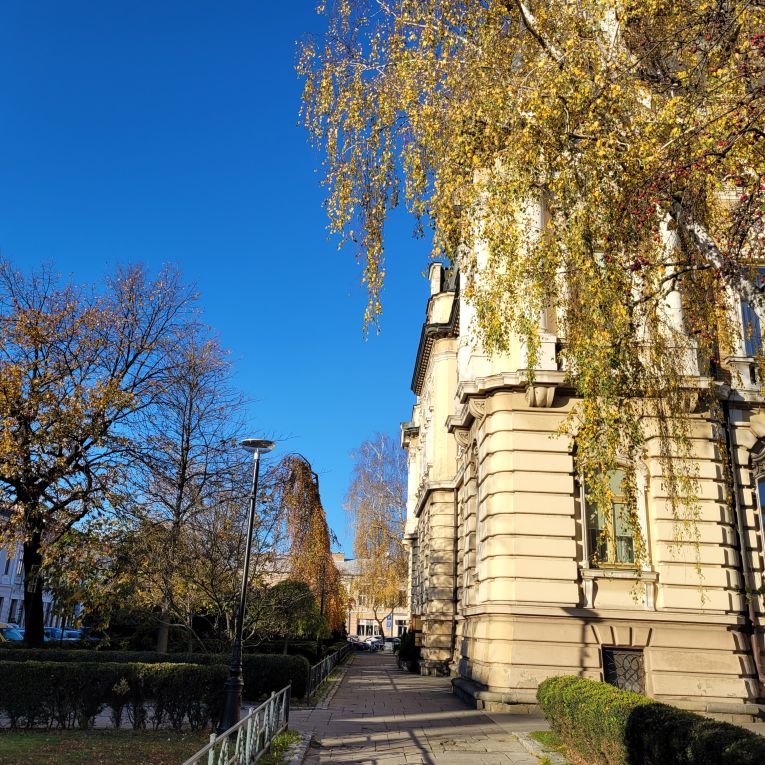




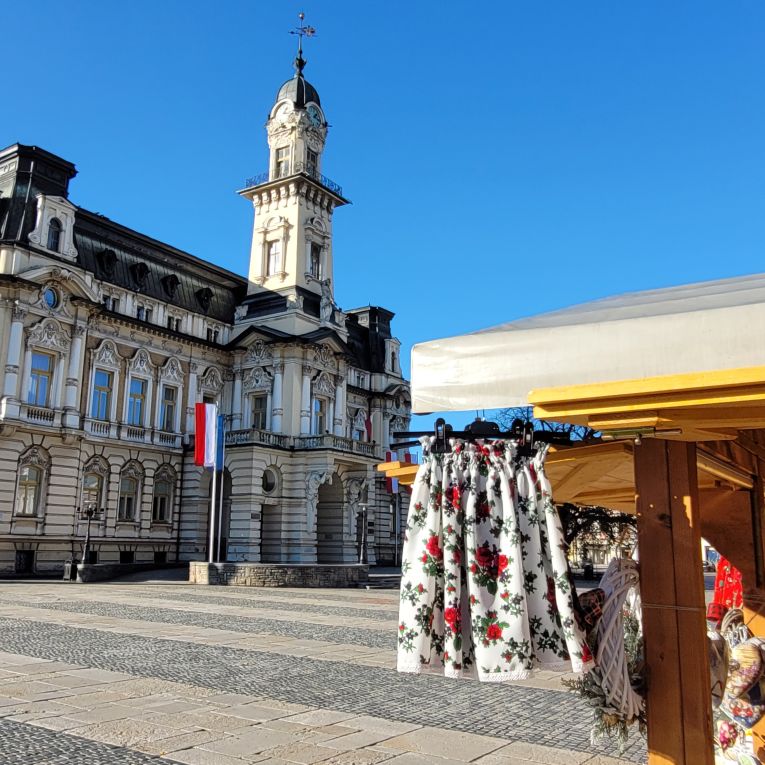




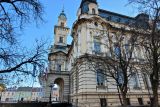





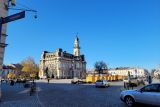

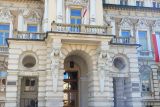





The heart of the city is a large square with a centrally located elegant town hall from the end of the 19th century. The market today is the city's salon - children play at the fountain and meet young people, there are folk handicraft fairs in front of the town hall, and a "time capsule has been placed in a quiet square in the western part of the market square. "....
The impressive market square in Nowy Sącz, 150x120 m in size, constituting the twelfth part of the town in 1292, together with 10 streets running out of it at right angles and at their intersections, form the historic, medieval chessboard layout of the town. 8 streets protruding from the corners of the market square are an extension of the market frontage. At the beginning of the 17th century, there were 40 burgher houses at the market square.
One of the oldest tenement houses on the market square is a two-winged house with an outbuilding at no. 2. It has a long, passable entrance hall with a 17th-century entrance to Gothic cellars. The Maria Ritter Gallery - a branch of the Museum in Nowy Sącz is located on the first floor.
In 1966, a new market square was laid. The market square - for centuries reviving on the days of fairs, once lined with pebbles of the Dunajec, has been turned into a city lounge.
There is little information about the first town hall in Nowy Sącz. The 15th-century, was located near the church of St. Margaret. It was a building with a high ground floor - "wide and spacious". It was then called the "old town hall". The New Town Hall - the seat of the city authorities to this day - was built in an eclectic style imitating the great styles of bygone eras. The decor of the town hall is dominated by Neo-Renaissance and Neo-Baroque. The plans for this magnificent one-story building with a clock tower were made by the city architect Jan Peroś. The construction company was run by the Krakow architect Karol Knaus. 123,602.73 Rhenish zlotys in the Austrian currency were allocated for the construction of the town hall. The town hall has not changed its architectural appearance since its construction, which was completed in the fall of 1897.
24h